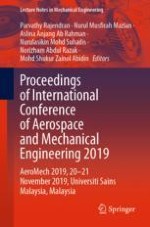2020 | OriginalPaper | Chapter
Aircraft Wing Aerodynamic Efficiency Improvement Using Longitudinal Spanwise Grooves
Authors : Samuel Merryisha, Parvathy Rajendran
Published in: Proceedings of International Conference of Aerospace and Mechanical Engineering 2019
Publisher: Springer Singapore
Activate our intelligent search to find suitable subject content or patents.
Select sections of text to find matching patents with Artificial Intelligence. powered by
Select sections of text to find additional relevant content using AI-assisted search. powered by
